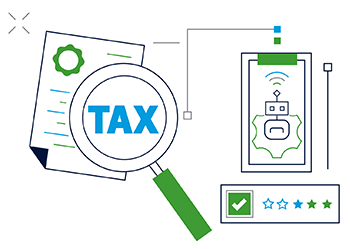Global Employer Services update
FBT, Contractors, Wage Compliance & PAYG.
 FBT changes & vehicle rules
FBT changes & vehicle rules
From 1 April 2025, plug-in hybrid electric vehicles (PHEVs) lose the zero/low emissions FBT exemption (unless first used and committed before that date). Employers will need new guidance on valuing electricity + petrol use for PHEVs.
Also from 1 April, employers can use corporate system records (payroll reports, etc.) instead of employee declarations or travel diaries for allowances, relocations, and travel claims.
- Vehicle compliance focus areas
Employers must ensure correct vehicle classification (passenger vs commercial), maintain robust logbooks, treat private use properly (home–work, school, lunch travel), and correctly report employee contributions. The ATO is paying closer attention to nil FBT returns and undeclared company vehicles.
- Contractor & Payroll Tax case
In Roofing Services Queensland v Commissioner, QCAT upheld that many payments to contractors should be treated as taxable wages for payroll tax. The tribunal reaffirmed that the burden lies on the taxpayer to prove any contractor exemptions, requiring detailed contemporaneous evidence.
- Wage & Long Service Leave compliance
Recent judgments across multiple jurisdictions have scrutinised long service leave obligations—especially for mobile and construction workforces—as well as issues of service continuity across jurisdictions.
In Bayer Castlev v Deputy Commissioner of Taxation, the Federal Court held a part-time worker redeployed into a significantly reduced hours role was genuinely redundant—highlighting that even if duties are similar, material changes in hours or remuneration matter for redundancy treatment and tax characterisation.
This video contains synthetic content
0:02
which has been approved by Rick Kimberly
0:04
and RSM Australia. Now we have covered
0:06
that. Welcome to our global employer
0:08
services update for the month of April
0:11
2025. In this month's video, we'll take
0:14
you through key developments across
0:16
fringe benefits tax, payroll tax,
0:18
contractor arrangements, wage
0:20
compliance, and pay as you go
0:21
withholding. Let's dive
0:24
in. With the 2025 FBT season now
0:28
underway, we wanted to rehash a number
0:31
of key developments that apply from the
0:33
1st of April 2025 and are new or updated
0:36
for the 2025 FBT year. These updates may
0:40
impact your reporting obligations,
0:42
recordeping and FBT liability,
0:44
particularly in relation to vehicles
0:46
substantiation and atto compliance focus
0:49
areas. From the 1st of April 2025,
0:53
plug-in hybrid electric vehicles, PHEVs,
0:56
will no longer qualify for the FBT
0:58
exemption for zero or low emissions
1:00
vehicles. However, employers can
1:03
continue to apply the exemption where
1:05
the PV was first used or available for
1:08
use before the 1st of April
1:10
2025. And there is a financially binding
1:13
commitment to continue providing the car
1:15
beyond this date. Note, optional
1:17
extensions are not sufficient.
1:20
The ATO has now also completed its
1:22
consultation on how to value both
1:24
electricity and petrol costs for plug-in
1:26
hybrid electric vehicles, PHEVs. While
1:30
PCG 202042 outlines a method for
1:33
calculating home charging costs for
1:34
electric vehicles, it does not apply to
1:37
PHEVs which rely on a combination of
1:40
electricity and petrol. New guidance
1:42
specific to PHEVs is expected later in
1:45
2025 and will provide a simplified
1:48
approach for calculating the cost of
1:50
both fuel
1:52
types. New from the 1st of April 2025,
1:55
employers may now use corporate records,
1:58
for example, system reports or payroll
2:00
data in place of certain employee
2:02
declarations and travel diaries. This
2:05
applies to a range of common
2:06
declarations including living away from
2:08
home allowances, vehicle and relocation
2:11
travel and otherwise deductible expense
2:14
claims. Employers can choose to use
2:16
either the traditional declaration forms
2:18
or alternative records but must have the
2:21
required data available at the time of
2:24
lodgement. The ATO has confirmed that
2:26
motor vehicles remain a key area of
2:28
compliance concern. Employers should
2:30
take note of the following specific
2:32
items. Vehicle classification. Ensure
2:35
vehicles are correctly categorized. For
2:37
example, passenger cars versus
2:40
commercial vehicles as this impacts the
2:42
FBT treatment and available exemptions.
2:45
Second is the quality of log books. The
2:48
ATO expects detailed, accurate and
2:50
representative log books. Incomplete or
2:52
inconsistent records may be disregarded
2:54
leading to higher FBT liabilities.
2:57
Thirdly, employers need to remember that
2:59
private use of vehicles is subject to
3:00
FBT. Travel between home and work,
3:03
school pickups and lunch trips are
3:05
generally considered private use and
3:07
attract FBT. Finally, employers need to
3:10
consider employee contributions. These
3:12
must be properly substantiated and
3:15
correctly reported in both the FBT
3:17
return and the employer's income tax
3:19
return. The ATO is also reviewing nil
3:21
returns and non-lodgement notices more
3:23
closely. Employers submitting a nil
3:25
return should be confident that no frr
3:27
benefits were provided in the year.
3:31
Further to the previous slide and as
3:33
part of a wider data matching
3:34
initiative, the ATO is sending letters
3:36
to employers where it identifies
3:38
potential FBT risks, particularly where
3:41
company registered vehicles are not
3:43
included in FBT lodgements and the
3:45
vehicles may not be used solely for work
3:47
rellated purposes. To the extent you
3:49
have any vehicles on your fixed asset
3:51
register, please consider whether there
3:53
are FBT obligations.
3:57
Now, we will touch on a recent
3:58
development in the contractors and
3:59
payroll tax space. In roofing services
4:02
Queensland v. Commissioner of State
4:04
Revenue, the Queensland Civil and
4:06
Administrative Tribunal largely upheld
4:08
the commissioner's reassessments that
4:10
treated payments to various contractors
4:12
as taxable wages for payroll tax
4:15
purposes. The case focused on whether
4:17
exemptions to exclude contracts where
4:20
services are performed either by
4:22
multiple persons engaged by the
4:23
contractor or where services are
4:25
provided for less than 90 days in a
4:27
financial year should be applied. While
4:30
the tribunal accepted that one
4:31
contractor met the requirements of both
4:33
exemptions based on credible oral
4:35
testimony and supporting documentation,
4:38
it found that roofing services had not
4:40
met the evidentiary burden in relation
4:42
to other contractors including Aquafix
4:45
roofing, NSM roof services, CWT roofing
4:48
and Sunshine Coast maintenance plumbers.
4:50
The evidence presented, such as safe
4:52
work method statements and insurance
4:53
policies, was either insufficient, not
4:56
contemporaneous, or failed to establish
4:58
who actually performed the work. QCAT
5:00
reiterated that the onus is on the
5:02
taxpayer to prove on the balance of
5:04
probabilities that exemptions apply,
5:07
requiring specific job level evidence
5:09
rather than general assertions about
5:11
usual practice or industry norms. The
5:14
tribunal also cautioned that even where
5:16
re- ro- roofing work is generally unsafe
5:18
to complete a loan, this does not
5:20
automatically meet the legal test for
5:21
exemption unless it can be shown that
5:23
two or more workers were engaged by the
5:25
contractor and not by the principal.
5:28
Ultimately, CQAT confirmed the
5:30
commissioner's decision to disallow
5:32
objections in relation to most
5:33
contractors, set aside the
5:35
commissioner's decision in relation to
5:37
SAS roofing, and directed the objection
5:39
be reconsidered in line with the
5:41
tribunal's findings. This case
5:44
highlights the importance of clear,
5:46
consistent documentation and evidence
5:48
when seeking to rely on contractor
5:50
exemptions under payroll tax
5:53
laws. By way of an update in the wage
5:56
compliance space, courts across multiple
5:58
jurisdictions have handed down a series
6:00
of decisions in recent weeks relating to
6:02
long service leave entitlements. These
6:04
cases span a range of issues including
6:07
continuity of service across state and
6:09
international borders as well as
6:11
employer obligations to contribute to
6:13
portable long service leave schemes,
6:16
particularly within the construction
6:18
industry. While the details vary, the
6:20
growing body of case law reflects an
6:23
increased willingness by tribunals and
6:25
regulators to scrutinize long service
6:27
leave entitlements and employer
6:29
compliance under state-based
6:30
legislation. Of note are Infosys
6:33
Technologies Vox, Energy Australia V Co-
6:36
Invest, Detector Inspector V Co- Invest,
6:39
and Corporate Air Charter V Australian
6:41
Federation of Air Pilots. Employers with
6:44
mobile workforces, construction related
6:46
roles or international transfers should
6:49
carefully review their long service
6:50
leave compliance and ensure they are
6:52
properly classifying employees and
6:54
contributing to the appropriate schemes.
6:56
This recent wave of cases highlights
6:58
that assumptions about long service
7:00
leave entitlement boundaries are
7:02
increasingly being tested before the
7:05
courts. The federal court has confirmed
7:08
that an employee can be genuinely
7:10
redundant even where the duties of a
7:12
proposed new role remain largely the
7:14
same if the redeployment involves a
7:16
material reduction in hours and
7:18
remuneration. In Bayer Castlev, Deputy
7:22
Commissioner of Taxation, the court
7:24
found that Miss Castle, a part-time
7:26
early learning assistant, had been made
7:28
genuinely redundant after her employer
7:30
offered alternative roles with 20 to 40%
7:33
lower hours and salary following a
7:35
restructure. Although the duties were
7:37
similar, the significant reduction in
7:39
working conditions meant the new roles
7:42
were not equivalent to her original
7:43
position. The ATO had classified the
7:46
termination payment as a regular
7:48
employment termination payment rather
7:50
than a genuine redundancy payment, which
7:53
is taxed more favorably. However, the
7:55
court disagreed, holding that genuine
7:57
redundancy can still apply where the
7:59
position no longer exists in its
8:00
original form, including where days,
8:03
hours, and remuneration have materially
8:06
changed. While the ATO has since
8:08
appealed this decision, the case is a
8:10
useful reminder for employers to
8:12
carefully assess termination
8:14
circumstances. It confirms that
8:15
substantial changes to working
8:17
conditions may amount to redundancy even
8:19
if some core duties are retained.
8:21
Employers are advised to ensure proper
8:23
tax characterization of termination
8:25
payments and seek advice if
8:29
uncertain. Thank you for joining us for
8:31
our April 2025 update. If you have any
8:34
questions or would like to discuss how
8:36
these developments may affect your
8:37
business, please don't hesitate to
8:39
contact your local RSM global employer
8:42
services team. Myself and Peter in
8:44
Melbourne, Gina and Neve in Perth, or
8:46
Jason in Sydney. We look forward to
8:49
supporting you through the 2025 FBT
8:51
compliance season.









